Year 1
The English curriculum is built around the three interrelated strands of language, literature and literacy. Teaching and learning programs should balance and integrate all three strands. Together, the strands focus on developing students' knowledge, understanding and skills in listening, reading, viewing, speaking, writing and creating. Learning in English builds on concepts, skills and processes developed in earlier years, and teachers will revisit and strengthen these as needed.
In Year 1, students communicate with peers, teachers, known adults and students from other classes.
Students engage with a variety of texts for enjoyment. They listen to, read, view and interpret spoken, written and multimodal texts designed to entertain and inform. These encompass traditional oral texts including Aboriginal stories, picture books, various types of stories, rhyming verse, poetry, non-fiction, film, dramatic performances and texts used by students as models for constructing their own texts.
The range of literary texts for Foundation to Year 10 comprises Australian literature, including the oral narrative traditions of Aboriginal and Torres Strait Islander Peoples, as well as the contemporary literature of these two cultural groups, and classic and contemporary world literature, including texts from and about Asia. Literary texts that support and extend Year 1 students as independent readers involve straightforward sequences of events and everyday happenings with recognisably realistic or imaginary characters. Informative texts present a small amount of new content about familiar topics of interest and topics being studied in other areas of the curriculum. These include decodable and predictable texts which present a small range of language features, including simple and compound sentences, some unfamiliar vocabulary, a small number of high-frequency words and words that need to be decoded phonically, as well as illustrations and diagrams that support the printed text.
Students create a variety of imaginative, informative and persuasive texts including recounts, procedures, performances, literary retellings and poetry.
(source: www.australiancurriculum.edu.au)
Achievement Standard
Receptive modes (listening, reading and viewing)
By the end of Year 1, students understand the different purposes of texts. They make connections to personal experience when explaining characters and main events in short texts. They identify that texts serve different purposes and that this affects how they are organised. They describe characters, settings and events in different types of literature.
Students read aloud, with developing fluency. They read short texts with some unfamiliar vocabulary, simple and compound sentences and supportive images. When reading, they use knowledge of the relationship between sounds and letters, high-frequency words, sentence boundary punctuation and directionality to make meaning. They recall key ideas and recognise literal and implied meaning in texts. They listen to others when taking part in conversations, using appropriate language features and interaction skills.
Productive modes (speaking, writing and creating)
Students understand how characters in texts are developed and give reasons for personal preferences. They create texts that show understanding of the connection between writing, speech and images.
They create short texts for a small range of purposes. They interact in pair, group and class discussions, taking turns when responding. They make short presentations on familiar topics. When writing, students provide details about ideas or events, and details about the participants in those events. They accurately spell high-frequency words and words with regular spelling patterns. They use capital letters and full stops and form all upper- and lower-case letters correctly.
(source: www.australiancurriculum.edu.au)
- Plus Plan
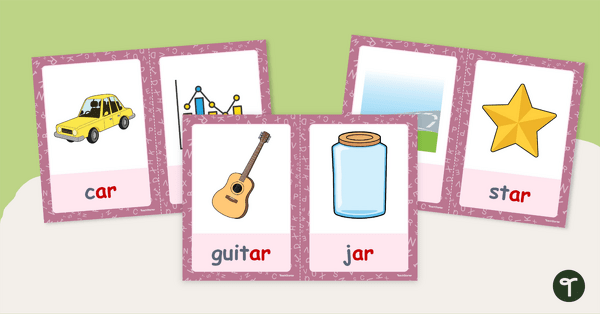
Ar Digraph Words With Images
Learn words that contain the 'ar' digraph with these word and picture flashcards.
- Plus Plan
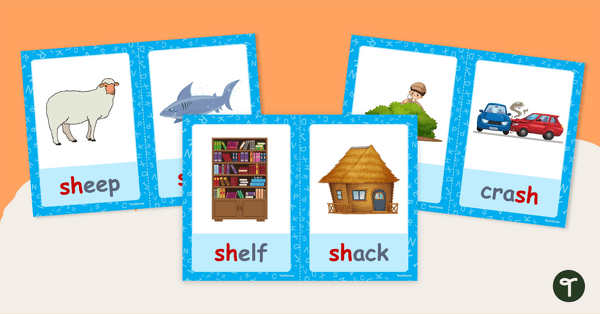
Sh Digraph Words With Images
Learn words that contain the 'sh' digraph with these word and picture flashcards.
- Plus Plan

Wh Digraph Words With Images
Learn words that contain the 'wh' digraph with these word and picture flashcards.
- Plus Plan
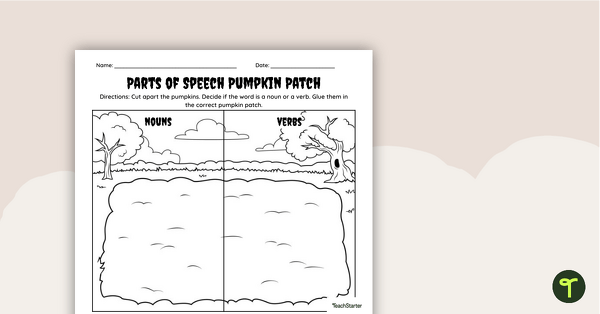
Parts of Speech Worksheet - Halloween Nouns and Verbs
Use this English grammar worksheet to add some Halloween spirit to your nouns and verbs lessons with a cut-and-paste worksheet.
- Plus Plan
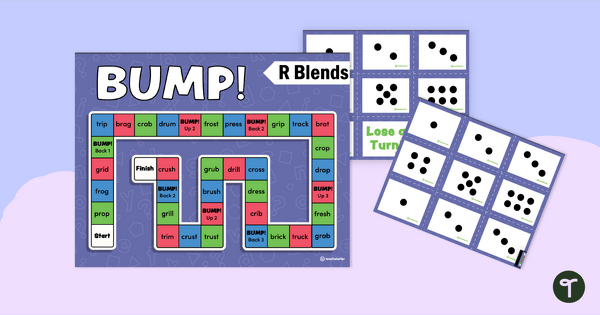
Consonant Blends Game - R Blend Words
A board game to practise decoding words with an r-blend.
- Plus Plan
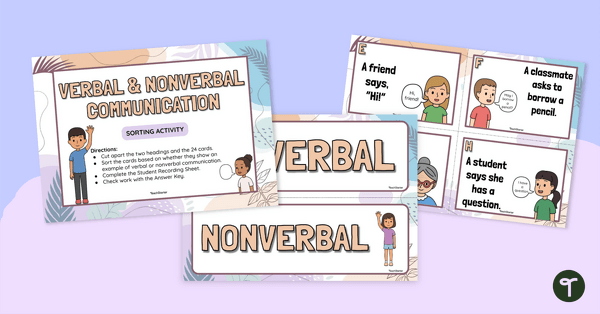
Verbal and Nonverbal Communication Sorting Activity
Use this sorting activity with your grade one and grade two students to practise differentiating between verbal and nonverbal communication methods.
- Plus Plan
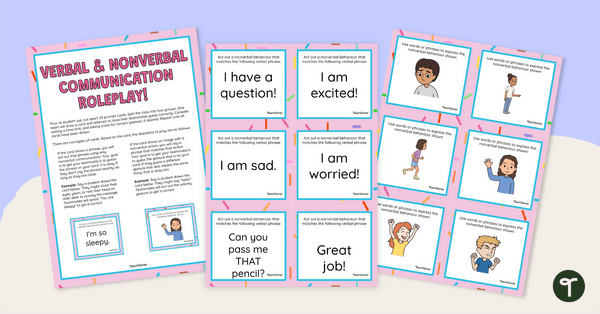
Verbal and Nonverbal Communication Roleplay Game
Use this active learning game to allow students to practise communication verbally and nonverbally, and interpret different verbal and nonverbal messages.
- Plus Plan
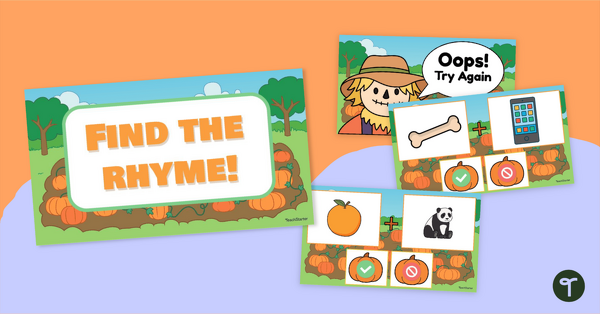
Pumpkin Patch-Find the Rhyming Word Game
Bring some rhyming fun into classroom with an interactive rhyming word game for year 1.
- Plus Plan
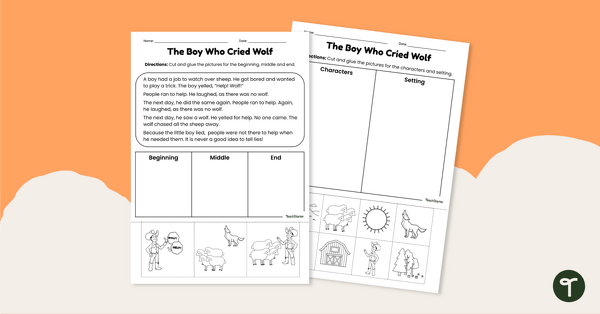
Story Elements Cut and Paste Worksheets – The Boy Who Cried Wolf
Explore story characters, settings and main events with this set of cut-and-paste worksheets based on a well-known fable.
- Plus Plan
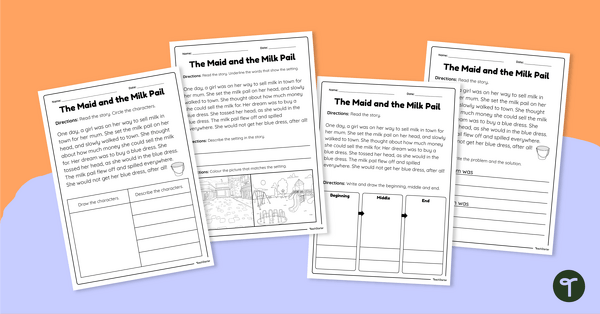
Story Elements Worksheets – The Maid and the Milk Pail
Practise identifying the story characters, settings and main events with this set of worksheets based on a traditional tale.
- Plus Plan

Character or Not? - Interactive Activity
Explore the difference between characters and non-characters with this digital learning activity.
- Plus Plan
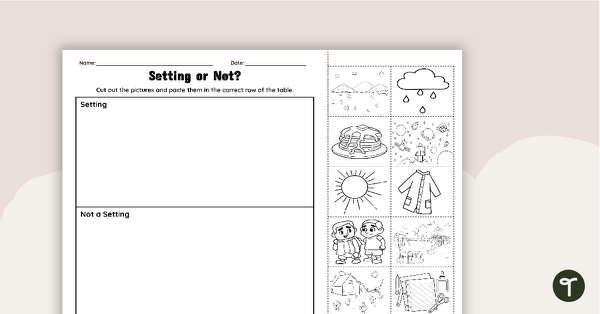
Story Setting or Not? Cut and Paste Worksheet
Explore the difference between story settings and non-settings with this cut-and-paste worksheet.
- Plus Plan
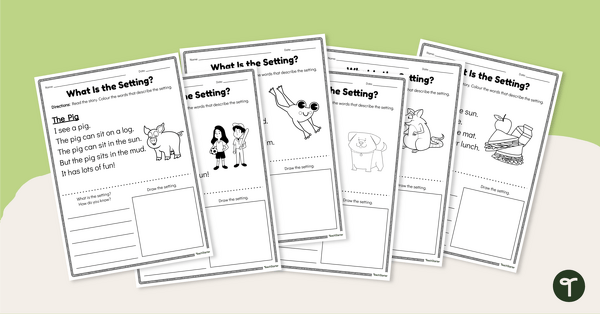
What Is the Setting? - Worksheets
Encourage your students to identify the setting in short and simple texts with this set of six worksheets.
- Plus Plan
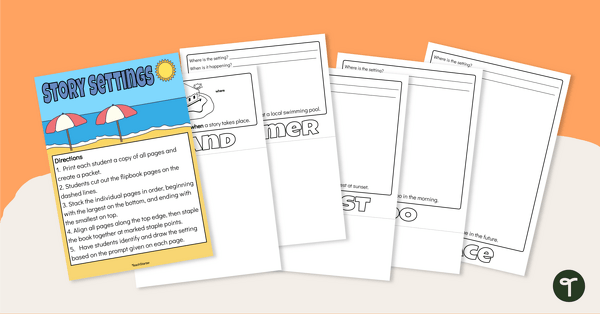
Story Settings - Flipbook
Teach your students about story settings with this hands-on flipbook.
- Plus Plan
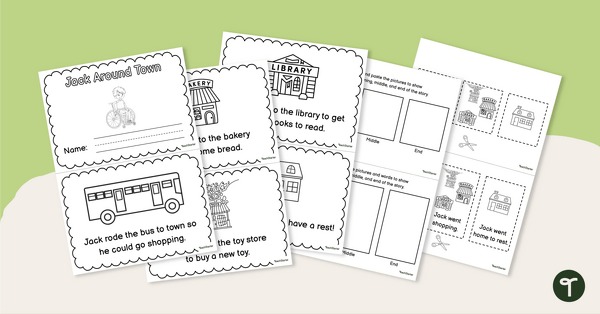
Beginning, Middle and End Mini-Book - Jack Around Town
Teach your students about the beginning, middle and end of a story with this narrative mini-book.
- Plus Plan

Sorting 3 to 5 Phoneme Words - Segmentation Activity
Practise segmenting 3 - 5 phonemes in words in this sorting activity
- Plus Plan
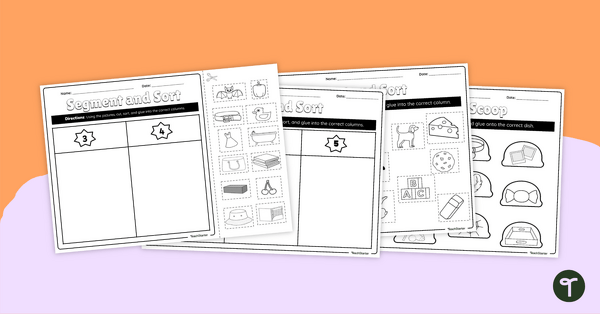
Phoneme Segmentation and Sorting Cut-and-Paste Worksheets
Count, cut and paste to practise segmenting words into their phonemes with this worksheet pack.
- Plus Plan
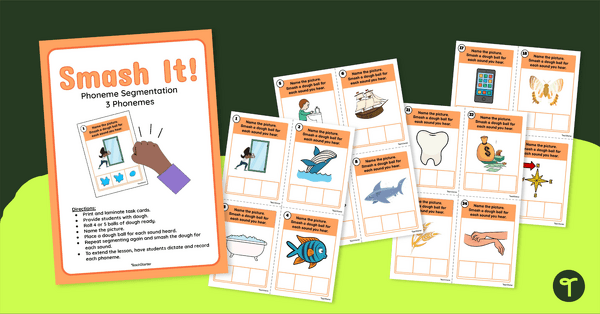
Segmenting 3 Phonemes Activity - Smash It!
Practise segmenting 3-phoneme words with this set of playdough smash task cards.
- Plus Plan
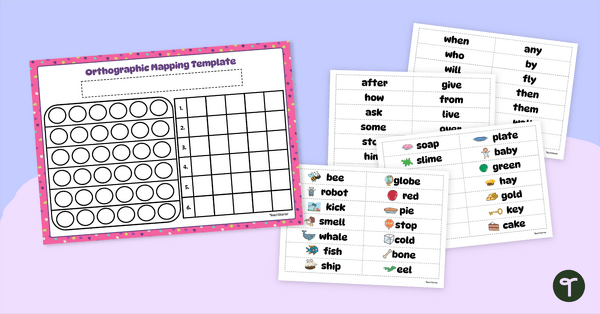
Orthographic Mapping Template and Word Cards
Practise mapping out words using an orthographic mapping template and word cards
- Plus Plan
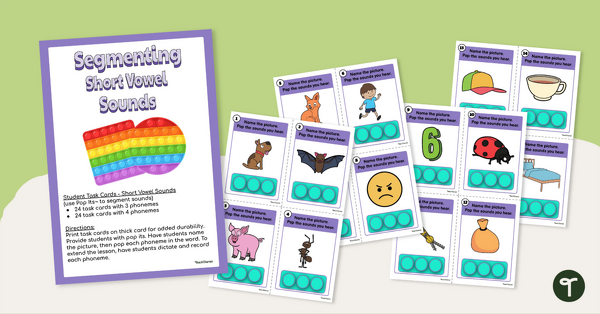
Pop Phonemes - Segmenting Short Vowel Words
Review phoneme segmentation by popping each phoneme using these task cards.
- Plus Plan
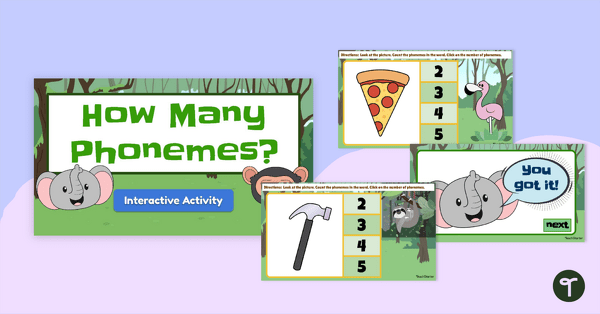
How Many Phonemes? Interactive Activity
Practise breaking words into their phonemes with this fun forrest-themed interactive activity.
- Plus Plan
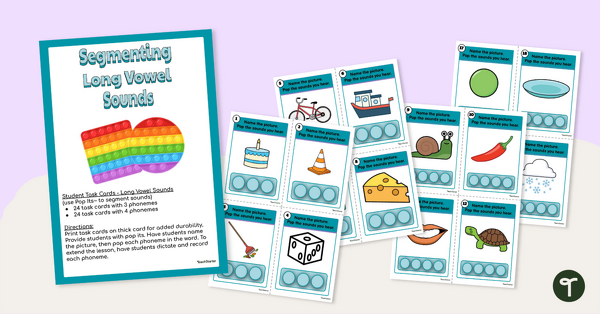
Pop Phonemes - Segmenting Long Vowel Words
Review phoneme segmentation by popping each phoneme using these task cards.
- Plus Plan
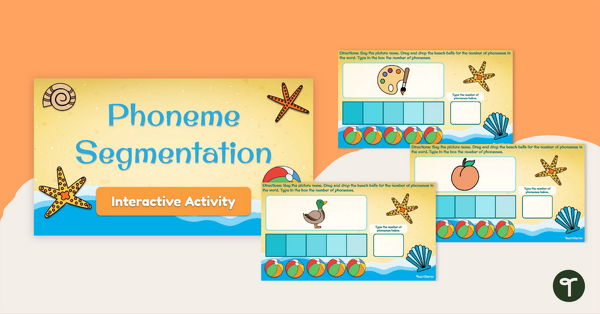
Beach-Themed Phoneme Segmentation Interactive Activity
Practise breaking words into their phonemes with this fun beach-themed interactive activity.
- Plus Plan
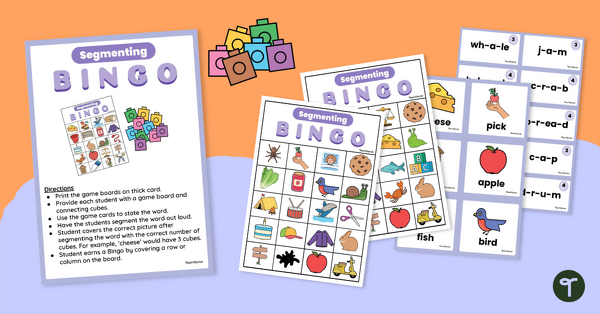
Bingo Phoneme Segmenting for 3 to 5 Phonemes
Play a game of bingo and count the phonemes in the words being called out.
- Plus Plan

Segmenting and Counting Phonemes PowerPoint
Learn how to segment words into phonemes with this easy-to-follow phoneme segmentation PowerPoint.
- Plus Plan
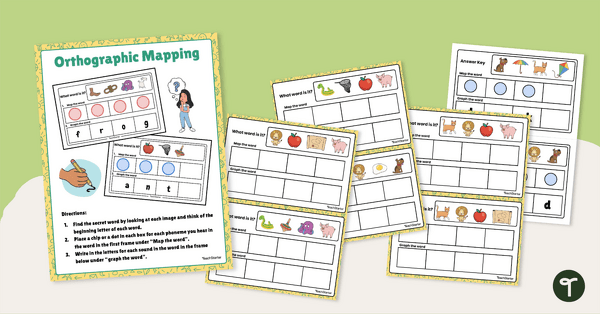
Word Mapping Task Cards
Practise segmenting words into phonemes with this set of word mapping task cards.
- Plus Plan
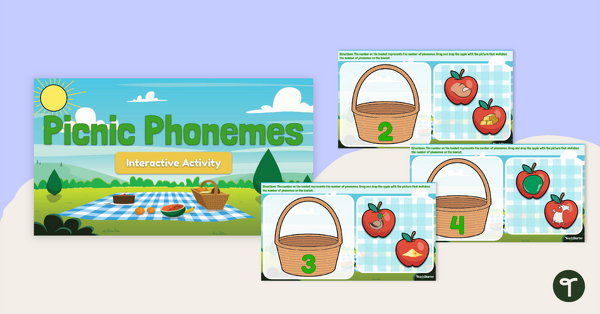
Picnic Phonemes - Phoneme Segmentation Interactive Activity
Practise breaking words into their phonemes with this fun picnic-themed interactive activity.
- Plus Plan
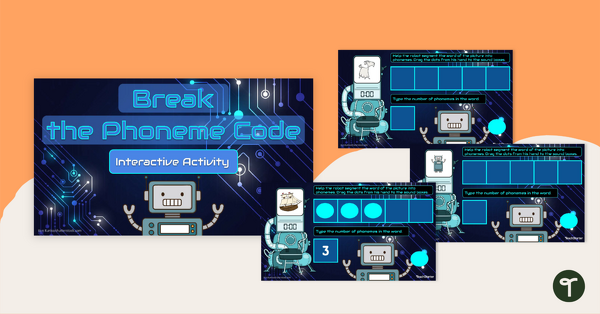
Break the Phoneme Code - Interactive Activity
Practise breaking words into their phonemes with this fun robot-themed interactive activity.
- Plus Plan
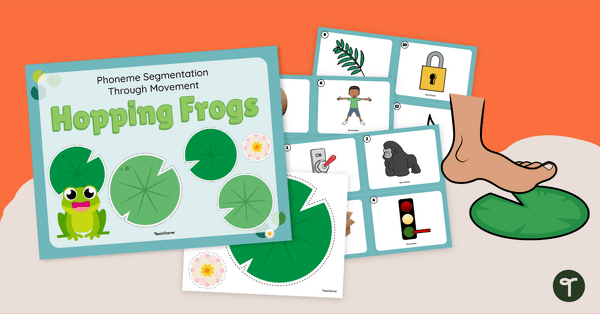
Phoneme Segmentation Activity - Hopping on Lily Pads
Jump the lilypads to practise segmenting 2, 3 and 4 phoneme words.
- Plus Plan

Break It Up! 2-Phoneme Word Segmentation Task Cards
Practise breaking down words with 2 phonemes into their sounds with this set of 18 task cards.
- Plus Plan
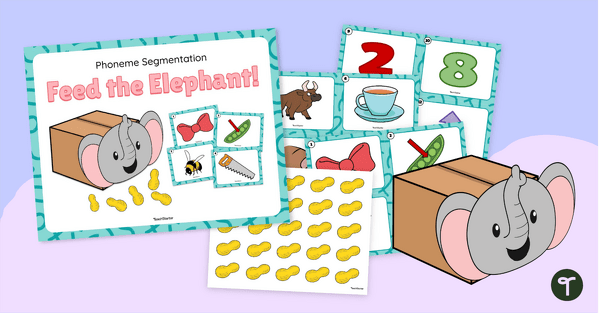
Phoneme Segmenting Activity – Feed the Elephant
Practise segmenting 2, 3 and 4 phoneme words verbally by feeding the elephant a peanut per phoneme.
- Plus Plan

Break It Up! 4-Phoneme Word Segmentation Task Cards
Practise breaking down words with 4 phonemes into their sounds with this set of 18 task cards.